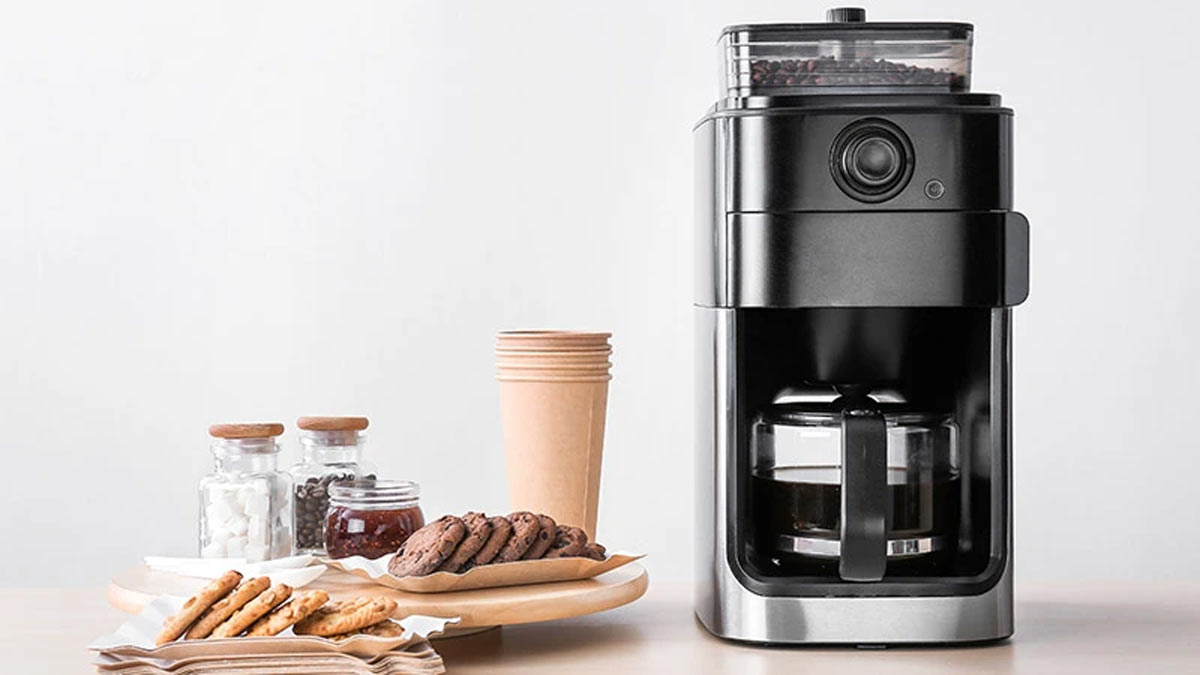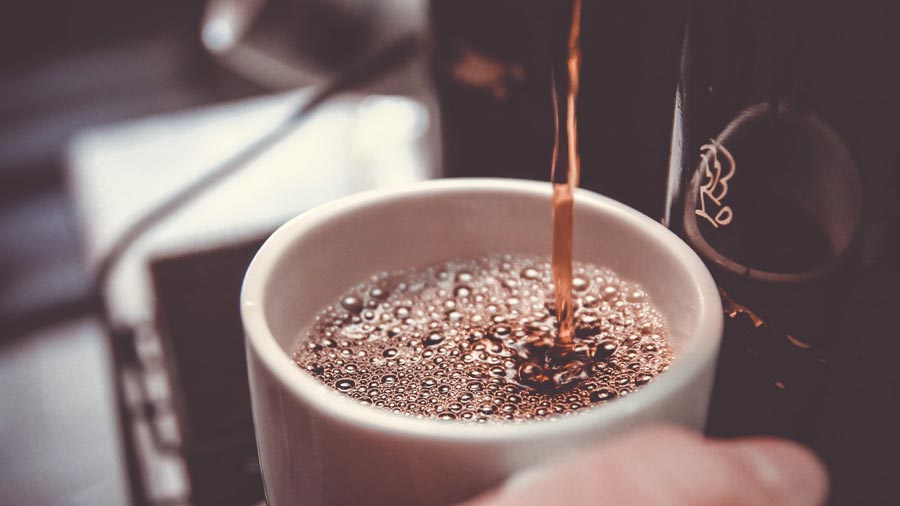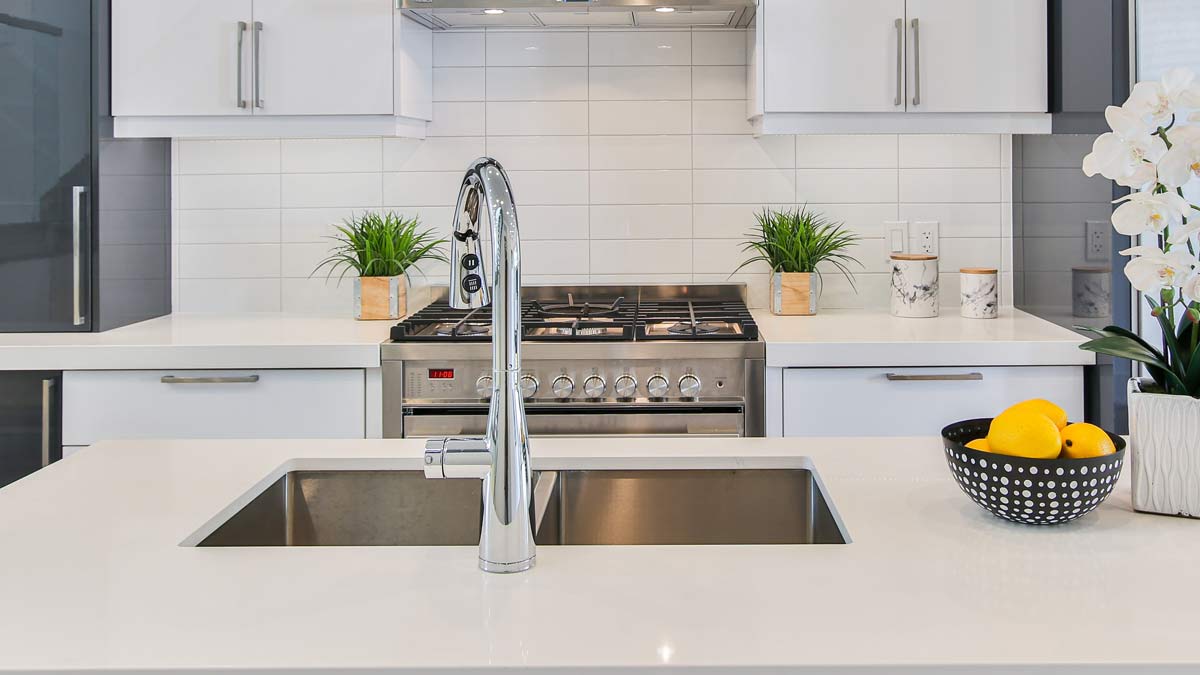
Cleaning 101: How to Deep Clean a Coffee Maker
Written by Stacey Kelleher. Reviewed by cleaning expert Sean Busch.
No one wants to start their morning with a moldy cup of joe, but you’d be amazed at how common it is! Whether you’ve got a Keurig, Moka pot, or French press, we walk you through how to clean a coffee maker.
Dirty Coffee Makers Can Actually Make You Sick

Because they’re poorly ventilated, your coffee maker is the ideal place for mold to reproduce. One study reported that coffee reservoirs were one of the top 10 most germ-laden places in your home – and 9% contained coliform bacteria (we’re talking about Salmonella and E. coli). Television news outlets in three major US cities swabbed 29 different machines and discovered more than 50% had bacteria counts in the millions.
Moldy coffee can cause adverse health reactions, especially for people with allergies, compromised immune systems, and other underlying health conditions. Mold spores can trigger side effects like sneezing, sinus blockage, headache, chronic respiratory infections, loose stools, bloating, and upset stomach.
How Often Should I Clean My Coffee Maker?

We recommend cleaning your coffee maker at least once every month, ideally more often if your home has hard water.
While you might assume that boiling water is enough to clean a coffee maker, that’s not enough to take care of internal buildup. These machines aren’t designed to reach a boiling point – and boiling water only kills germs after a full minute of continuous exposure.
The bottom line? Not-quite-boiling water circulating through your coffee maker’s system just won’t kill mold and bacteria.
Frequent Care Is Easy Care
Between deep cleans, immediately toss soggy coffee grounds in the garbage and dry any wet parts with a microfiber towel. After every brew, leave the basin cover and filter cover open.
If your device contains a charcoal filter in the basin, replace it regularly according to the manufacturer’s instructions.
Can You Run Soapy Water Through a Coffee Maker?
In short, no. Manufacturers caution users to avoid running soapy water through coffee makers because it’s difficult to entirely remove, even after multiple cycles. It doesn’t take a coffee expert to know that soapy coffee doesn’t work.
How to Clean Your Coffee Pot with Vinegar

White vinegar is one of the most effective, food-safe ways to tackle this job. Not only is it effective, but most people have a jug in their pantry.
- Mix 1:2 white vinegar and water. Filtered water is ideal for cleaning and brewing coffee (tap water can cause scaling).
- Pour this solution into the top of the water reservoir. Let it sit for 15-30 minutes.
- Using a clean microfiber towel dipped in the water-vinegar solution, wipe down the heads that spray water onto coffee grounds, the internal filter basket, and any other areas you can easily reach.
- Insert a filter to catch loose grinds and leaks. Brew with the vinegar solution then run 2-3 more cycles with filtered water. When complete, turn off your coffee maker and let it cool completely. You’ll know the unit is completely flushed out when you no longer detect the scent of vinegar.
- Clean your carafe and other removable attachments by soaking them in warm, soapy water. Puracy Dish Soap and an OXO Dish Brush will help you reach tight areas. You can also load coffee machine attachments into the top rack of your dishwasher and run a regular cycle using Puracy Dishwasher Detergent Packs.

- Dry each part completely before reassembling your coffee maker.
- Clean the exterior machine with a microfiber cloth and a natural surface cleaner.
The Easiest Way to Clean a French Press

While French presses have fewer parts to trap dirt and bacteria, they really should be deep-cleaned regularly. During the workweek, a simple rinse and light scrub should be enough. When the weekend comes, take action with the following steps:
- Unscrew the bottom by turning the plunger counter-clockwise.
- Place all of the pieces in a large bowl.
- Sprinkle with one teaspoon of baking soda and cover with boiling water.
- Let it sit for 1-2 hours.
- Scrub with an old toothbrush.
- Rinse thoroughly, air dry, and reassemble.
How to Clean a Keurig Machine

You can use white vinegar to “descale” your Keurig just like any regular coffee maker.
- Unplug the machine.
- Take off the water chamber, lid, mug stand, and K-cup holder.
- Wash them in warm, soapy water.
- Wipe down the machine with a clean, dry microfiber cloth.
- Fill the water chamber with a mixture of 50% white vinegar and 50% filtered water.
- Run the machine with an empty K-cup holder until you no longer smell vinegar.
- Run a final cycle with only filtered water.
- Dry all of the detachable parts before replacing them.
How to Clean a Moka Pot

Moka pots require more daily diligence than automatic pots. However, these products are built to last forever...assuming you care for them correctly.
The Moka pot should never – under any circumstances – be cleaned with soap, harsh brushes, or dishwashers. These can strip away the “good” coffee oils that line the stainless steel, and that can also affect the flavor of your coffee.
- After each use, wait for your stovetop coffee maker to cool down.
- Take the machine apart and rinse under warm water.
- Either use a clean microfiber cloth or allow each part to air dry before reassembling.
How to Clean Coffee Pot Stains
Coffee stains can be some of the hardest to remove, but our tips and tricks should zap them without too much elbow grease.
Note: If your coffee pot has a long spout, long-handled tube cleaners might be an excellent purchase.
For Glass Coffee Pots

Fill the coffee pot with warm water, a squirt of gentle dish soap, and a bit of rice. Give it a good swirl then scrub it to unlock any grime. Rinse well with clean water.
For more stubborn stains, apply a paste of baking soda and water and let it sit for up to an hour. An old toothbrush or microfiber cloth should take care of any remaining marks.
Clean Coffee Pot Stains from Stainless Steel
To clean stainless steel coffee pots, remove excess coffee debris, sprinkle in 1 tablespoon of baking soda, then fill the container with boiling water. Let it sit overnight, rinse thoroughly with clean water, and use as normal.
For extra-stubborn carafe stains, add 2 tablespoons of baking soda and ½ cup hydrogen peroxide to your coffee pot. Top with boiling water, wait 1-2 hours, and the stains should lift away without too much struggle.
Puracy Natural Dish Soap: Powerful, Concentrated, Safe

With a few simple steps – and Puracy Dish Soap – you’ll have a clean coffee maker that’s ready for rich, great-tasting brew. Plant-based, 99.41% natural, and super-concentrated, this is a safe choice for tackling stains on all of your dishes, utensils, glassware, pots, pans, and much more.


























